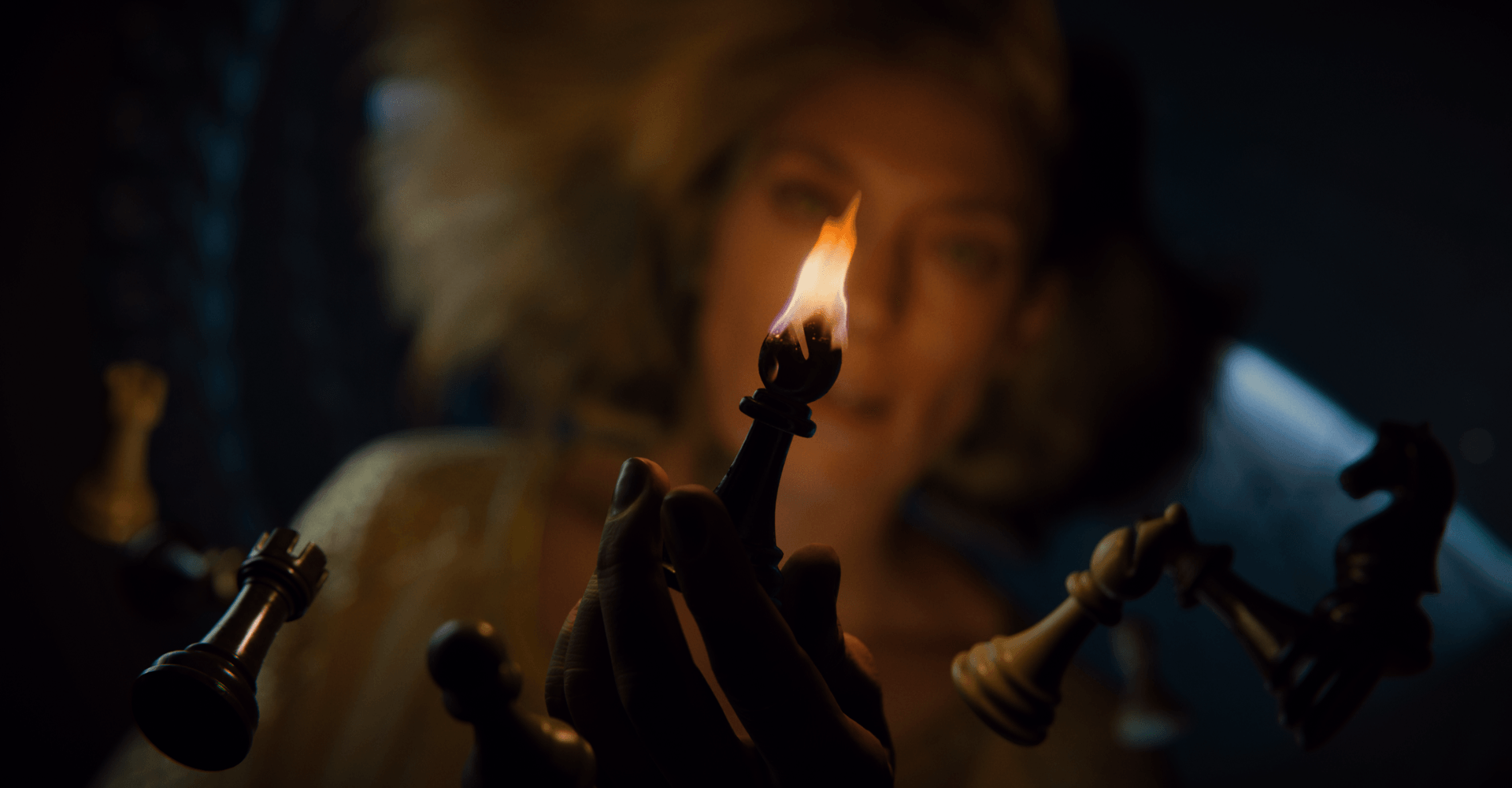
O que é rigging em animação?
Como funciona a montagem de animação?
Os animadores usam rigging para posicionar e animar um personagem ou objeto por meio de uma rede de movimentos. Os rigs ajudam a controlar a manipulação daquele personagem ou objeto. Em vez de agir diretamente no objeto, eles criam uma estrutura hierárquica capaz de realizar o movimento ou a mudança desejada. Este é um equipamento, e o objeto é acionado por esse equipamento.
O equipamento pode ser qualquer coisa, mas normalmente há um ou mais “controles” que foram configurados para permitir diferentes tipos de movimento ou mudanças no objeto. Essas mudanças podem ser tão simples quanto translações ou rotações, mas podem crescer e incluir a automação de comportamentos e movimentos complexos.
Para os personagens, os animadores usarão técnicas de montagem mais complexas. “Esqueletos”, “articulações” e outros “deformadores” podem ser usados para mudar a aparência da geometria. Isso permite a pose e a deformação personalizada do modelo.
Ao usar software 3D como Maya, Blender ou 3ds Max, um artista de rigging pode criar diferentes tipos de rigs para animação. Um animador pode então manipular os controles do equipamento, como se estivesse movendo e posicionando um boneco digital. Eles usam quadros-chave para registrar mudanças na posição dos controles ao longo do tempo para criar o movimento animado. Esses tipos de modelos manipulados podem então ser importados para mecanismos de jogo como o Unity.
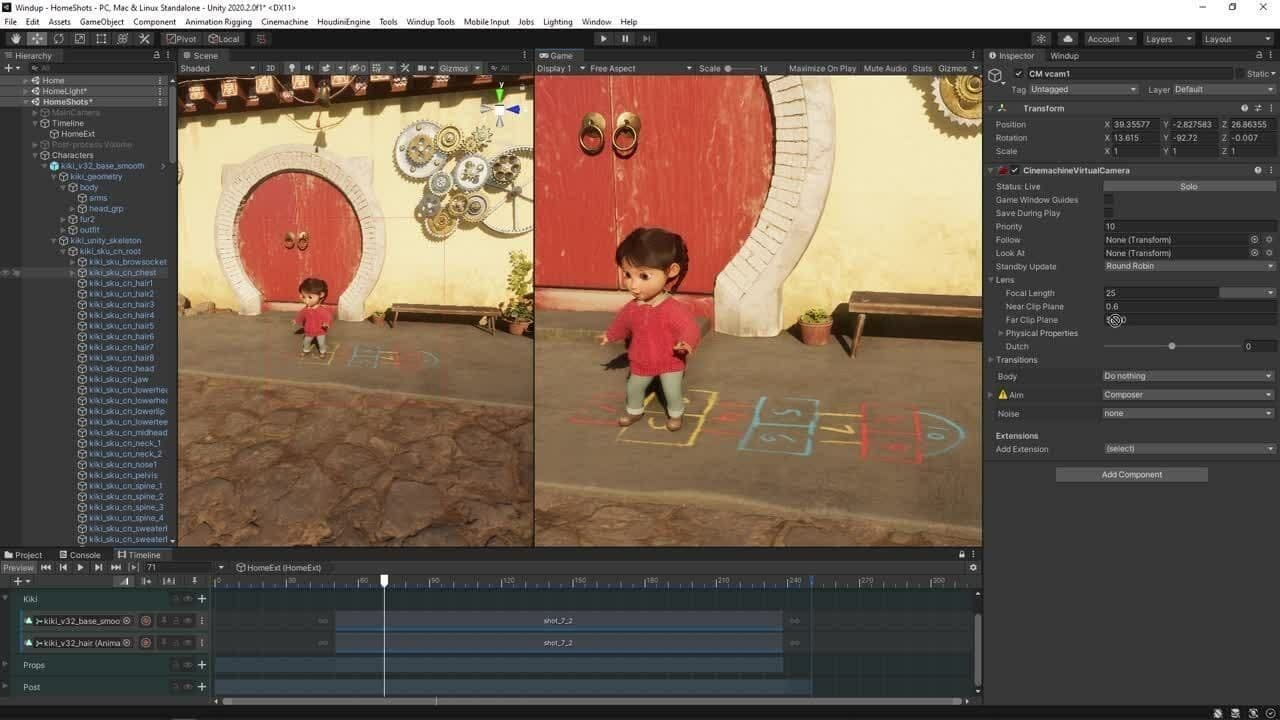
O que é manipulação de personagens?
A manipulação de personagens é o processo de pegar um modelo estático 3D (ou 2D) e transformá-lo em um boneco digital articulado. Esse processo tem muitas etapas, mas quase sempre envolverá a criação de uma estrutura esquelética feita de ossos ou “articulações” e a ligação do modelo ou “pele” a essas articulações. Quanto mais equipamentos um personagem tiver, mais movimentos complexos e sutis ele será capaz de fazer.
Quando o modelo puder se mover com o esqueleto, o artista de rigging criará um conjunto de controles que o animador usará para posicionar o personagem. A criação, o layout e a funcionalidade desse esquema de controle estão no cerne do trabalho do artista de montagem.
Além disso, a aparência do modelo mudará quando ele for posado, o que é chamado de “deformação”. Um artista de rigging é responsável por fazer ajustes no modelo do personagem quando ele é posicionado e usa um sistema para conduzir essas mudanças. O resultado final é um boneco digital que é fácil para um animador posar, que parece atraente após a deformação e tem comportamentos complexos automatizados.
Clique no vídeo acima e conheça os bastidores do WiNDUP para ver como os personagens animados são projetados e ganham vida. Pule para 3:18 para obter uma breve introdução sobre como o rigging de personagens é obtido no Unity.
Rigging para animação 2D e 3D
Rigging é a técnica mais comum para animar personagens, criaturas ou objetos em filmes, TV e videogames. Qualquer coisa que exija movimento pode ser adaptada para animação. A manipulação com software 3D pode ajudar a automatizar movimentos mais complexos, como a física ragdoll, aplicando uma simulação física precisa em todas as estruturas esqueléticas.
Para começar a montar, os animadores primeiro precisam de um personagem ou objeto 2D ou 3D . Ao criar o equipamento, os animadores devem pensar no que querem que ele faça, como ele deve se mover e onde ficarão as articulações ou pivôs. Então eles criarão uma estrutura hierárquica, ou esqueleto, se for um personagem, junto com um conjunto de controles.
Em seguida, eles conectarão o objeto ou personagem ao equipamento, um processo que pode ser simples ou complexo, dependendo do tipo de equipamento necessário. A partir daí, um animador pode manipular o equipamento para criar animação com mais facilidade.

Crie personagens interativos com rigging de animação
Neste vídeo, o YouTuber Brackeys explica os princípios de rigging de animação e como você pode aplicá-los em uma ampla variedade de cenários. Ele também fornece um tutorial passo a passo de como a montagem de animação é feita no Editor Unity .
Benefícios do rigging de personagens
Fundamentos de rigging de personagens
Movimento hierárquico independente
Para criar uma sensação de ritmo e equilíbrio na animação – e uma aparência mais crível – o movimento hierárquico é a ordem na qual diferentes partes de um personagem ou objeto se movem. Por exemplo, em um ciclo de caminhada, a cabeça e o pescoço se movem primeiro, seguidos pelo tronco, quadris e pernas.
Isso também cria uma sensação de peso e gravidade, ou velocidade e impulso. O movimento hierárquico independente também pode se referir à maneira como diferentes elementos dentro de uma animação se movem em relação uns aos outros, como dois personagens caminhando lado a lado.
Para criar uma sensação de ritmo e equilíbrio na animação – e uma aparência mais crível – o movimento hierárquico é a ordem na qual diferentes partes de um personagem ou objeto se movem. Por exemplo, em um ciclo de caminhada, a cabeça e o pescoço se movem primeiro, seguidos pelo tronco, quadris e pernas.
Isso também cria uma sensação de peso e gravidade, ou velocidade e impulso. O movimento hierárquico independente também pode se referir à maneira como diferentes elementos dentro de uma animação se movem em relação uns aos outros, como dois personagens caminhando lado a lado.
Pintura de peso preciso
Um modelo de personagem manipulado é anexado a uma hierarquia de articulações ou a um esqueleto. Cada vértice individual do modelo é ponderado entre diferentes articulações, que é como eles se movem quando você move o esqueleto.
Para que um modelo de personagem seja deformado corretamente quando animado, é necessária uma pintura de peso precisa. Este é um processo de adicionar ou remover pesos de vértices específicos em uma malha para juntas correspondentes no esqueleto. Isso geralmente é feito pintando na malha usando uma ferramenta de pincel em um software de animação 3D . A pintura com peso limpo pode dar maior controle sobre a deformação de um personagem e melhorar a aparência do resultado final.
Restrições de movimento ósseo
Para produzir uma animação realista ou estilizada, é essencial entender os princípios do movimento. Entender como um objeto se move em relação a outros objetos é conhecido como restrição de movimento. Existem dois tipos: restrições cinemáticas e restrições dinâmicas.
Restrições cinemáticas definem o movimento de um objeto sem considerar as forças que atuam sobre ele. Por exemplo, um objeto não pode se mover mais rápido que a velocidade da luz.
Restrições dinâmicas levam em consideração as forças que atuam sobre um objeto, por exemplo, um objeto só pode acelerar a uma determinada taxa.
As restrições de movimento dos ossos controlam seu grau de liberdade dentro de sua transformação para criar movimento natural.
Fundamentos de rigging de personagens
Cinemática para frente
A cinemática direta é o processo de manipulação de uma hierarquia articular da raiz à ponta, ou em uma direção “direta”. Para posicionar um braço usando cinemática para frente, comece girando a parte superior do braço, seguido pelo cotovelo e, finalmente, o pulso. Esse tipo de movimento resulta em arcos agradáveis quando animados, mas torna mais difícil definir a posição exata do ponto final, pois sua posição é uma combinação das rotações do restante da cadeia de articulações e é ajustada manualmente.
Cinemática inversa
Cinemática inversa é o processo de manipulação de uma hierarquia de juntas da ponta à raiz, ou em uma direção “inversa”. Para posicionar um braço usando cinemática inversa, você só precisa mover a mão, e as rotações do cotovelo e da parte superior do braço serão calculadas com base na posição final da mão. Esse tipo de movimento permite travar a mão do personagem em um ponto no espaço, ou seus pés no chão, sem deslizar. No entanto, animar arcos naturais em toda a cadeia articular pode ser mais difícil.
Chaves acionadas
Também conhecidas como teclas acionadas por conjunto, as teclas acionadas permitem que você execute animações “baseadas em condições” de quadros-chave, como girar uma roda para abrir uma porta, de forma mais eficiente. Dependendo da hierarquia da animação (ou seja, o que impulsiona o resultado desejado), você precisa criar um link dependente entre um par de objetos. Por exemplo, sua roda é o “motorista líder” e a porta é o “impulsionado”. Você então define isso como uma chave. O motorista líder guiará o dirigido, e o movimento do dirigido ocorrerá automaticamente conforme você anima o motorista líder.
Misture formas
Alterar a forma de um objeto em sua cena requer “deformadores”. Mesclar formas é um deformador usado para criar a ilusão de uma forma se transformando em outra de forma natural – por exemplo, um olho piscando.
Restrições
Para refinar um equipamento e torná-lo mais fácil de manipular, você pode usar restrições para controlar automaticamente a posição, orientação ou escala. Existem vários tipos – as restrições de mira controlam a orientação de um objeto para que ele aponte para outro objeto dentro da cena, como a direção dos olhos. Restrições de ponto fazem com que um objeto siga outro, e restrições de vetor forçam a direção de uma cadeia cinemática inversa a seguir outro objeto, como controlar a direção do joelho.
Curvas de controle
Qualquer propriedade animável pode ter uma curva de animação que permite que você veja os valores de mudança das propriedades como linhas em um gráfico, em vez de trilhas lineares exibidas apenas quando os quadros-chave ocorrem. Uma curva de controle de animação tem várias chaves que atuam como pontos de controle pelos quais a curva passa. A curva entre cada quadro-chave de um movimento animado define o movimento entre as duas teclas.
Aprenda animação de personagens com Unity
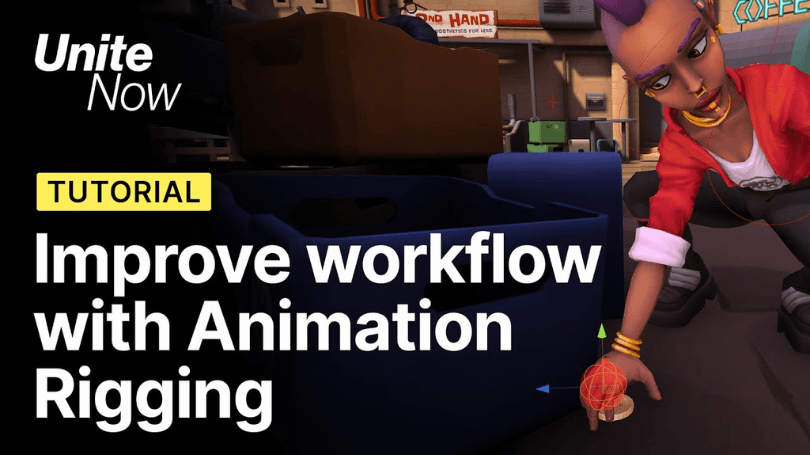
Melhore o fluxo de trabalho de animação
Aprenda como melhorar seu fluxo de trabalho de animação com rigging de animação. Este webinar aborda como configurar seu personagem e executar rigging e animação em tempo de execução no Editor Unity .
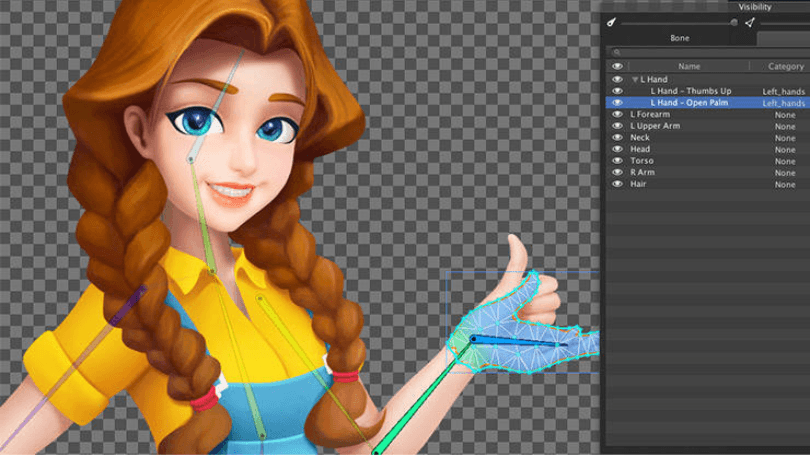
Aprenda a configuração do avatar
Nestes cursos tutoriais, você aprenderá a configurar seus próprios avatares por meio de movimento de raiz de autoridade, sobrepondo múltiplas animações com máscaras de avatar e muito mais.
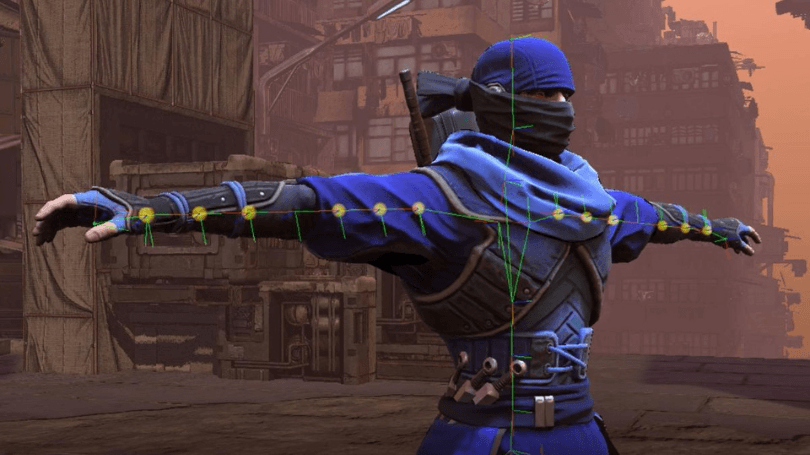
Trabalhando com rigging de animação
Obtenha uma compreensão mais profunda da manipulação de animação e aprenda o que é necessário para manipular com sucesso um personagem no Unity. Este tutorial aborda como configurar um construtor de rig, renderização de ossos, trabalhar com restrições de rig e muito mais.
Leituras semelhantes
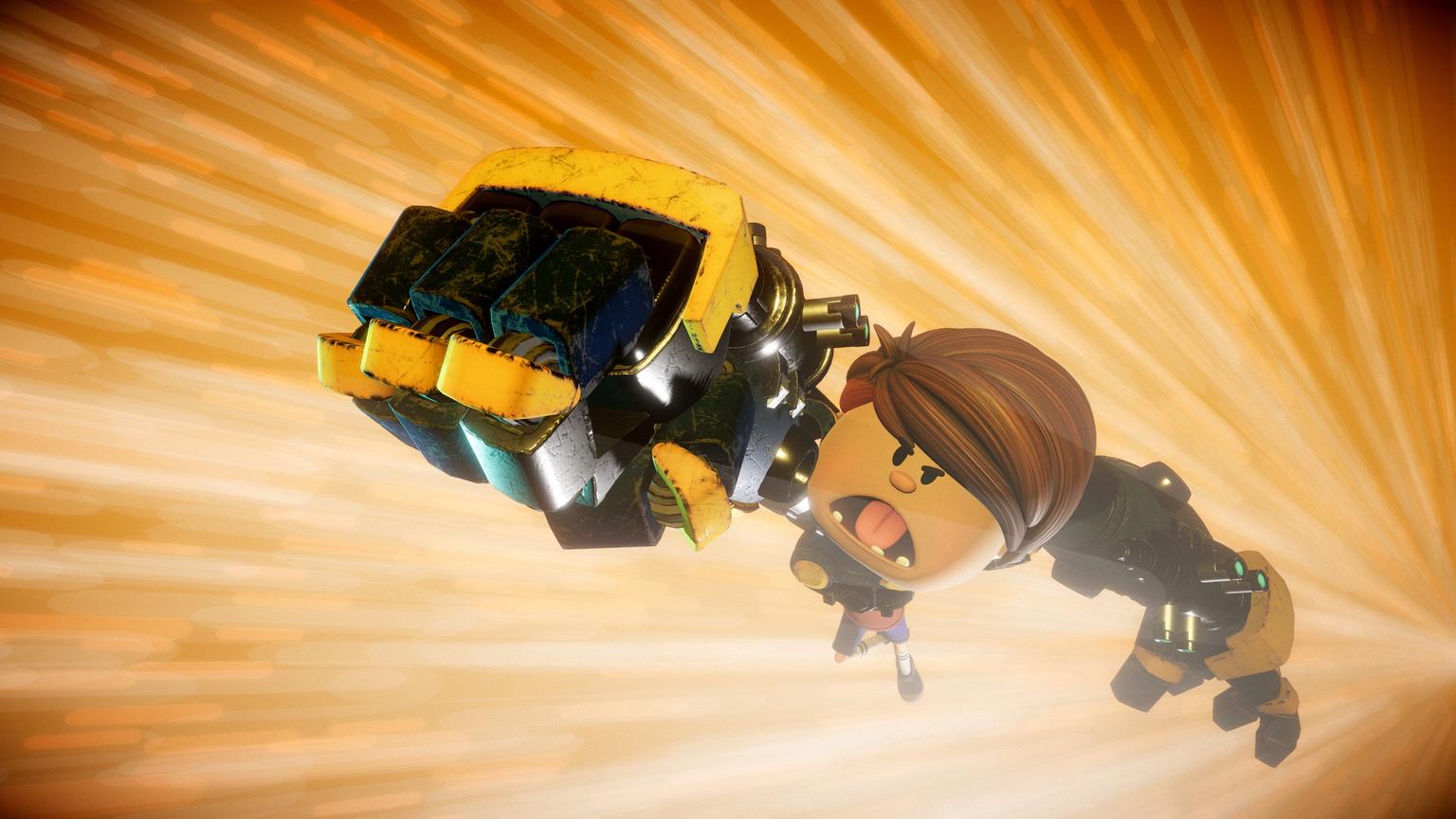
O que é animação 3D?
A animação 3D é uma técnica que cria imagens em movimento em um ambiente tridimensional (3D). O que dá a impressão de que os objetos estão se movendo em um espaço 3D. Leia mais para acessar cursos gratuitos e conhecer os bastidores dos curtas-metragens feitos com o Unity.
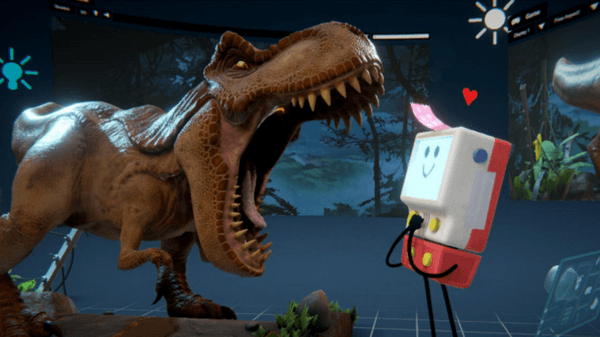
O que é animação por computador?
Animação por computador é o processo de usar computadores para criar imagens e vídeos animados. Esse processo pode ser usado para criar qualquer coisa, desde simples imagens 2D até complexas animações 3D . Leia mais sobre imagens geradas por computador (CGI) e descubra como dar vida a humanos gerados por computador.